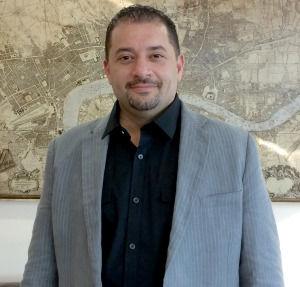Issa Asad Explains the Future of the Lifeline Government Service

Issa Asad Florida
Many low-income individuals don’t have much cash to spare. For these men and women, adding the additional burden of a wireless phone service isn’t possible. That’s no small obstacle to out of work individuals, students, and families who struggle to maintain a connection from a distance. Lifeline wireless providers offer wireless phone service free of charge for those who qualify. These services are invaluable to low-income persons, but many believe they are in need of modernization. The FCC agreed and proposed through the Federal Lifeline Assistance Program the 2012 Reform Order setting guidelines for the future of Lifeline wireless services.
While the Federal Lifeline Assistance Program has many advocates, Issa Asad Florida entrepreneur is particularly outspoken in his support. As current CEO of Lifeline phone provider Q Link Wireless, Asad strongly supports the development of this program. In Asad’s opinion, the program is not only advisable but necessary; he believes that low-income individuals will continue to need Lifeline wireless services for many years to come. Asad speaks with some authority; his company is one of the leading providers of Lifeline service in the U.S.
Asad concurs with other advocates of the program who opine that the Reform Order issued by the FCC in 2012 will ensure the protection of the program into the future and enhance services already offered by the Lifeline program. These new enhancements promise low-income individuals currently using Lifeline wireless more modern and higher quality services than previously experienced.
The outline below briefly describes some Lifeline reforms planned by the FCC; to read the full text of the 2012 Reform Act click this link.
Broadband Pilot Program

Issa Asad Florida
This FCC plans on including broadband service to individuals subscribing to Lifeline wireless phone service. The FCC 2012 Reform clearly outlines this goal as a necessity for those low-income persons seeking employment or pursuing continuing education. In an increasingly technological age, men and women without access to broadband service are at a distinct disadvantage in the workforce. Affordable and reliable broadband service could benefit those individuals working to improve their situation by providing a tool previously unavailable to them.
To ensure the best option for implementation, the FCC started the Broadband Pilot Program. This program collects high-quality information as an aid for the FCC in discovering the most efficient way to encourage Lifeline customers to enroll in and keep broadband services.
Bundled Services
To modernize the Lifeline wireless program, the 2012 Reform Order plans to incorporate bundled service plans to enrolled individuals. The new bundles will include voice packages, broadband service, and enhanced calling features. Bundled features on standard phone plans offer superior savings for the subscriber, and the FCC wants these savings extended to low-income individuals enrolled with Lifeline.
Program Cost Savings
While Lifeline phone service is invaluable to those enrolled, the program’s critics are quick to point out one major flaw in discounted wireless service: cost. Historically, the cost to provide free wireless services through Lifeline has been high, and critics suggest the expense is exorbitant. The FCC outlined a comprehensive plan for reducing the overall expense of providing Lifeline wireless services. Some of the cost-preventing measures include:
* Limiting Lifeline benefit service to one in a household at any time
* Creating an automated database that will check eligibility and make sure a person qualifies to receive benefits
* Establishing a current subscriber database to eliminate duplicate benefits
These changes promise to improve Lifeline drastically. That is a good thing and according to Assad, necessary. He opines that the continuation of the program is integral to the lives of Lifeline subscribers nationwide and that the program must keep up with modern advancements. While these reforms are challenging, they will ultimately lead to better services offered by Lifeline wireless providers. He is excited about Lifeline’s prospects, and the additional benefits subscribers might soon receive.
As with any significant change, the successful implementation of the Lifeline wireless reforms may take some time; nevertheless, these reforms promise a bright future for Lifeline subscribers. Low-income households can expect even more to come from the provider that has serviced their wireless needs for over 30 years. Lifeline continues to keep people connected; at home, in school, on the job, in emergencies or seeking employment. Low-income individuals can be confident that Lifeline will continue to meet their changing needs.


